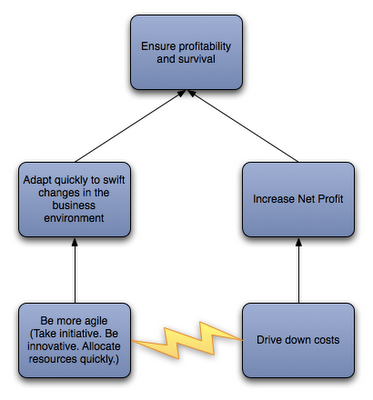Tic-Tac-Toe and Business Strategy

Business strategy is often likened to a game of chess: complex rules, practically infinite variations, many complex patterns, difficult to master... The complexity of chess can easily obscure the points about strategy, so let's use another game as a model for understanding the use of business strategy: Tic-Tac-Toe: Business strategy is about moving swiftly and getting an advantageous position. In Tic-Tac-Toe, this is pretty straight forward: The first mover can choose the best position. In business, it is a bit more complicated. For example, a first mover may have to expend effort blazing a trail, selling a new concept to the market. A second mover can use the trail blazed by the first mover. when the time is right, the second mover can pounce, exploiting a weakness in the first mover's strategy. Even if business strategy is more complex, the principle is the same: Move swiftly when the time comes, go for an advantageous position. One important aspect that is often overlook


